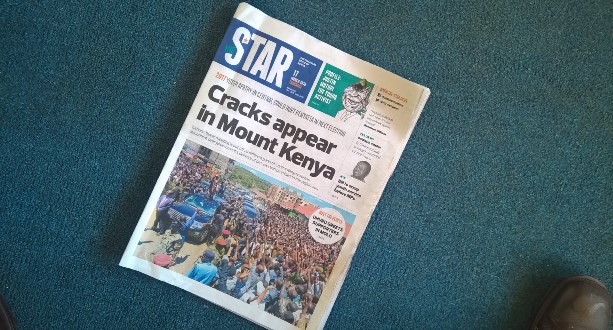Even as the retrenchment continued at Radio Africa Group, it has emerged that the fate of The Star newspaper is hanging in the balance. Very credible sources close to management reveal that the newspaper, whose circulation has dropped by more than 50% over the past two years to below 10,000 copies, could be closed this year, exactly a decade since it was launched.
Those in the know are already preparing eulogies for a newspaper that employs over 200 people directly within the Radio Africa Group. The plan is to nurse it for the next six or so months and hopefully reap from election campaign readership and advertising, then shut it after the polls to focus on digital.
This is the direction Nation Media Group took when its newly launched low-end market newspaper, Nairobi News, could not break even. The company stopped publishing the print version and retained a smaller team for its online edition, which is among the most read websites in Kenya.
If the Star shuts, it will mark a sad ending to a newspaper that held promise in the market as an alternative to the big boys – Nation and Standard – catering to the interests of young people and minority groups like Asians. On it too lie the career dreams of many employees and by extension families, who will be left jobless.
Related >> The rise and fall of Radio Africa
The troubles that The Star faces are largely a result of failing to have a working transition strategy from its founding foundation of a print newspaper to the new era where social media and bloggers have joined the journalism fray especially in breaking news and publishing sensitive stories that most newspaper take time to write.
The team left to run the paper after the retrenchment will have the unenviable task of turning it around to give management a good enough reason to keep publishing it.
That means raising circulation (basically getting more young people to pick up The Star at the newsstand) and attracting sustainable advertising, especially from the corporate world.
But in a market with shifting readership trends – digital media and radio are taking more and more ads from papers and magazines – this will not be a walk in the park. An increasingly young population is demanding information delivered to their palms, which has affected consumption of print media.
[crp]
Even then, the middle-age and older audiences are also experiencing a change in tastes, with many reluctantly getting addicted to their mobile gadgets and finding less time for the newspaper or magazine, as news websites and social media device ways of reaching them wherever they are even if it means in the middle of their night on the beer table or hotel room.
Mainstream newspapers will also have to do something to keep their numbers growing. Many have recorded drops in circulation and are only trying to get the numbers back on track. Nation and Standard, which rely heavily on newspapers have recorded significant decreases in revenues over the past few years and the trend is likely to hold in the near-term.

















































![Pula Co-Founders and Co-CEOs, Rose Goslinga & Thomas Njeru. Pula provides agricultural insurance and digital products to help smallholder farmers manage climate risks, improve farming practices and increase their incomes. [ Photo / Courtesy ]](https://businesstoday.co.ke/wp-content/uploads/2021/01/Pula-Co-Founders-and-Co-CEOs-Thomas-Njeru-Rose-Goslinga.jpg)




























































Leave a comment